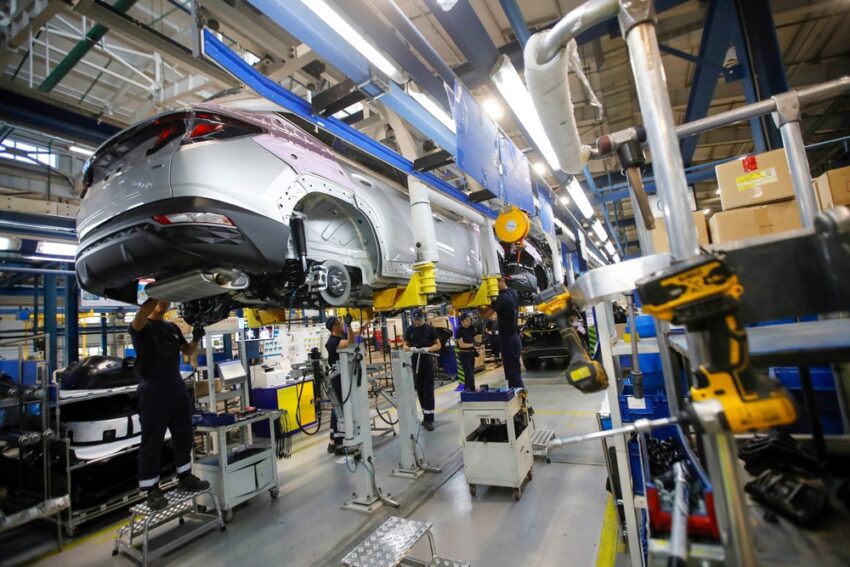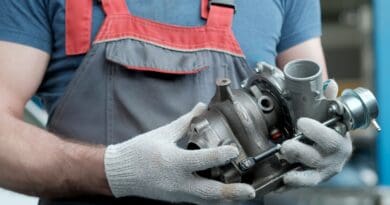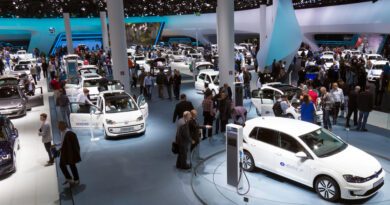
The EV Boom and Its Ripple Effect on the Auto Supply Chain
The automotive industry is experiencing the most dramatic upheaval since Henry Ford revolutionized mass production. Electric vehicles, once dismissed as futuristic novelties, are now firmly mainstream.
In 2023 alone, more than 14 million EVs were sold, representing nearly a fifth of global car sales. Projections suggest this figure could climb to 40 percent by 2030, signaling not just a consumer trend but a seismic shift in the way mobility is produced, powered, and distributed.
This momentum is not confined to dealership floors or urban streets. It is reverberating across the global supply chain, challenging century-old systems and creating entirely new ecosystems. The EV boom has become a chain reaction: altering demand for raw materials, redefining manufacturing processes, pressuring logistics, and reshaping the balance of power between automakers and suppliers.
Raw Materials: Lithium Becomes the New Oil
The first tremor in the supply chain begins at the very foundation: raw materials. Internal combustion engine vehicles are powered by oil, but EVs run on minerals. Lithium, nickel, cobalt, and manganese have become the lifeblood of battery production, and demand for these minerals is skyrocketing. The International Energy Agency predicts lithium demand could grow fivefold by 2035, while copper, essential for wiring and motors, is facing a similar strain.
This scramble has reordered relationships between automakers and miners. Companies that once had little reason to engage directly with extraction industries are now cutting deals at the source.
- Automakers such as Tesla and Volkswagen are entering into direct agreements with mines in South America and Australia.
- Supply chains that used to be centered on steel, rubber, and petroleum now hinge on lithium, cobalt, and rare earth elements.
- Geopolitical dependencies are rising, since many of these minerals are concentrated in politically sensitive regions.
Batteries: The New Industrial Battleground
If raw materials are the foundation, batteries are the beating heart of the EV revolution. Batteries account for up to 40 percent of an EV’s total cost, making them both a technological challenge and a competitive differentiator. This has set off a global race to scale production capacity.
Gigafactories are spreading across Europe, Asia, and North America, with more than 300 large-scale plants expected by 2030. Automakers are increasingly moving beyond traditional supplier relationships to integrate battery production vertically. Companies like BYD and Tesla already manufacture their own cells, while others are investing billions in joint ventures with battery specialists.
- Vertical integration: automakers are no longer just carmakers but battery producers.
- Innovation push: the industry is experimenting with solid-state batteries and cobalt-free chemistries.
- Circular economy models: recycling and second-life applications are becoming central to strategy.
“Whoever controls the battery supply chain controls the EV market—it’s as simple as that,” says Maham Khan, Head of Marketing at EV Cables.
Semiconductors: Cars Meet Consumer Electronics
Beyond batteries, EVs have intensified the demand for semiconductors. A gasoline-powered car may need about 1,000 chips, but an electric vehicle can require up to 3,000. These chips manage critical systems, from battery performance to infotainment to autonomous driving capabilities.
The semiconductor shortage of 2021–2022 exposed just how fragile these supply lines can be. In response, automakers are forging long-term partnerships with chipmakers and diversifying supply sources.
- Greater reliance on high-tech suppliers, especially for silicon carbide chips that improve EV efficiency.
- Closer integration between the auto and consumer electronics industries.
- Shift in bargaining power toward chipmakers, who are now as critical as traditional Tier 1 automotive suppliers.
Automakers have entered the chip business by necessity, not by choice. Without stable access, EV production grinds to a halt,” says Suhail Patel, Director of Dustro.
Rethinking EV Logistics
The EV supply chain doesn’t stop at the factory. Batteries are heavy, hazardous, and costly to transport, creating new challenges for logistics providers. To address these risks, automakers are shifting toward more localized strategies and upgraded infrastructure.
- Regional hubs: Gigafactories are being built closer to target markets to reduce transit costs and safety risks.
- Specialized transport: New shipping containers and port facilities are being designed specifically for EVs and high-capacity batteries.
- Infrastructure readiness: Distribution centers now include charging stations to ensure vehicles arrive with functioning batteries.
“The logistics of EVs are different. We’re moving energy storage units, not just vehicles. Handling and transporting large batteries demands specialized safety and infrastructure,” says Kellon Ambrose, Managing Director of Electric Wheelchairs USA.
Suppliers: Winners and Losers in the Transition
Perhaps the most disruptive change is happening among suppliers. For decades, the auto supply chain revolved around mechanical components—transmissions, exhaust systems, fuel injection units. These are increasingly irrelevant in the EV age.
- Traditional suppliers are pivoting to lightweight materials, thermal management, and battery casings.
- Tier 1 giants like Bosch and Continental are reinventing themselves as software-driven mobility firms.
- New entrants—startups in battery tech, software, and charging—are seizing opportunities to capture value once reserved for established players.
“The winners of the EV era won’t just be carmakers; they’ll be the ones who build seamless digital ecosystems around energy and mobility,” argues Alex Vasylenko, Founder of Digital Business Card.
Workforce: A Human Supply Chain Shift
EV adoption isn’t only about materials and machines; it’s also about people. With fewer moving parts in EVs compared to combustion cars, demand for traditional assembly-line roles is declining. At the same time, jobs in software, robotics, and advanced manufacturing are growing.
- 30% fewer moving parts in EVs reduces the need for some legacy roles.
- New demand is rising in battery chemistry, AI-driven manufacturing, and coding.
- Automakers and governments are investing in reskilling programs to smooth the transition.
“The workforce challenge isn’t about losing jobs, it’s about shifting skills fast enough to keep pace with technology,” says Allen Liu, Tech Lead & Content Specialist at FreSound.
The Financial Stakes of EV Independence
The EV transition is as much economic as it is geopolitical. With China controlling more than 70 percent of global battery production and mineral refining, this concentration of supply raises both financial and strategic risks for other nations. The U.S. and Europe are responding by reshaping policies to reduce vulnerabilities and encourage regional production.
- Diversification of supply: Building gigafactories closer to home reduces exposure to price shocks and global disruptions.
- Capital incentives: Subsidies, tax breaks, and financing packages are designed to attract private investment into local battery production.
- Policy as risk management: Industrial strategy is now inseparable from economic resilience, influencing both long-term growth and market stability.
Beyond Cars: Charging and the Energy Grid
The impact of EV adoption spills far beyond the vehicle itself. Charging infrastructure and grid readiness are now part of the automotive ecosystem. Utilities, which once operated independently of carmakers, are becoming critical partners.
- Surging demand for chargers, transformers, and grid modernization.
- Vehicle-to-grid innovation, where EVs act as mobile energy storage.
- New industries around electrical hardware and installation services.
Sustainability: From Linear to Circular Chains
While EVs promise cleaner mobility, the sustainability of their supply chains remains under scrutiny. Mining for lithium and cobalt carries environmental and ethical risks, prompting automakers to explore circular solutions.
- Battery recycling is moving from experimental to mainstream.
- Second-life applications are extending the usefulness of used packs.
- Traceability and ethical sourcing are becoming selling points for consumers who want more than just a “green” badge on their cars.
Business Implications: Who Captures Value in the EV Supply Chain?
The EV boom is not just an engineering transformation — it is a restructuring of value across the industry. Profit pools that once sat squarely with automakers and legacy suppliers are shifting toward mining companies, battery producers, and technology providers. At the same time, new opportunities are emerging for firms that can connect the dots between manufacturing, distribution, and consumer adoption.
“The question now isn’t if EVs will dominate, it’s who captures the consumer relationship as the supply chain reshuffles,” says Thomas O’Shaughnessy, President of Consumer Marketing at Clever Offers.
Conclusion: A New Blueprint for the Industry
The EV boom is more than a shift in drivetrain technology—it is a wholesale reconfiguration of the auto supply chain. Every stage, from mining and refining to logistics and recycling, is being disrupted. The ripple effects are creating new winners, displacing old giants, and forcing companies and governments to rethink their strategies in real time.
The bottom line is that the future of mobility is electric, but building that future depends on supply chains that are resilient, innovative, and sustainable. Those who adapt quickly will ride the wave of transformation. Those who hesitate may find themselves left behind in a rapidly electrified world.





